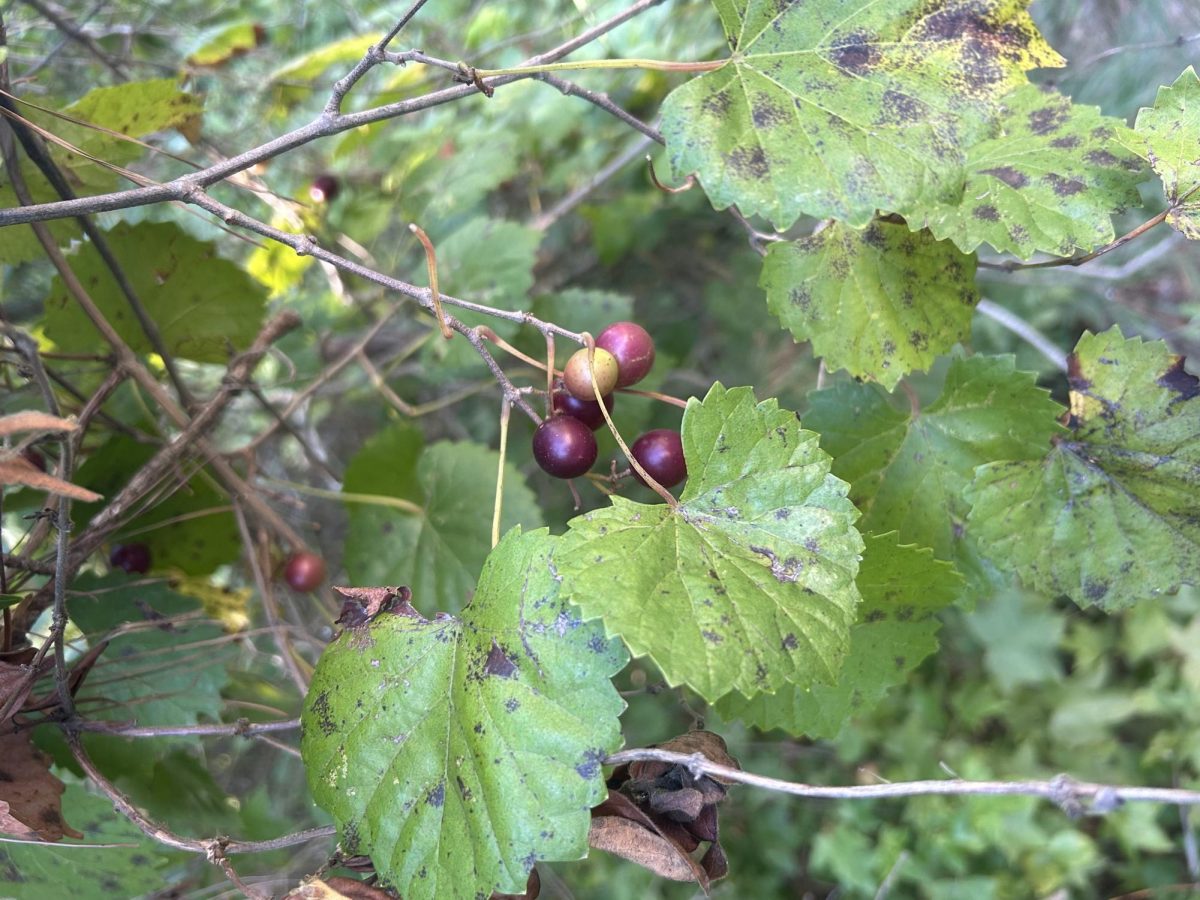The forest at Clover Hill is just an abrupt barrier to many of us, but the towering, vibrant walls of leaves have a delicious secret. Huge vines weave their way through the branches and scramble to capture sugar from rays of sun so they can grow a wonderfully sweet fruit called a muscadine.
Like clockwork the dark purple fruits fall from above at the start of each September and keep coming through the fall. Most people never notice the grapes and pop their thick skins like balloons under their feet, but muscadines are filled with a sweet juice that is often compared to grape-flavored candy. As long as you spit out the bitter seeds, these fruits can be truly delicious.
They have health benefits too: muscadines are rich in antioxidants, minerals, and fiber, and have benefits ranging from improving heart health to preventing cancer.
Muscadines are a wild vine with a rich history. When English explorer Sir Walter Raleigh first saw the fields where Native Americans grew the grapes, he said, “In all the world the like abundance is not to be found.” One of the oldest grapevines on the planet is the Mother Vine in North Carolina, a 400+ year old muscadine originally planted by Croatoans. Many cultures throughout the Southeast have old traditions of making foods like pies, jams, and dumplings from muscadine grapes, and they were essential for the country’s wine industry until Prohibition erased the memory of muscadines from the minds of most Americans.
Muscadine grapes aren’t as commonly grown anymore, but some of the abundance witnessed by Raleigh is still with us today. They thrive where the forest has been cut back at the edges of roads, buildings, and trails. They hang from tree tops and carpet the ground, offering plenty of fruit to anyone who wants to find it. Muscadines can be identified by their unique leaves with jagged edges and large purpley-black fruits. They’re perfectly good to eat as they are, but the North Carolina Muscadine Grape Association has a list of recipes for anyone who likes to cook.
Muscadines are not difficult to grow yourself either. As a native plant, they’re perfectly adapted to the soil, climate, and ecosystem of Chesterfield, so they have almost no pests or diseases and need minimal care. As long as they’re given plenty of space to sprawl out and climb, they can be a great addition to any garden!












Crystal Rose • Sep 26, 2024 at 9:56 pm
Thank you for sharing this. I love the part about Sir Walter Raleigh’s comment when seeing them! Awesome that they prevent cancer! We’ve got them all around us and I really enjoyed picking a lot this year. In our area they are ready to harvest by August and pretty much over by September with only a few stragglers hanging on. I also enjoy the leaves adding them to stir fry and tea.
Hazel • Sep 27, 2024 at 11:20 pm
That’s really cool, I’ve never heard of people using the leaves like that before!